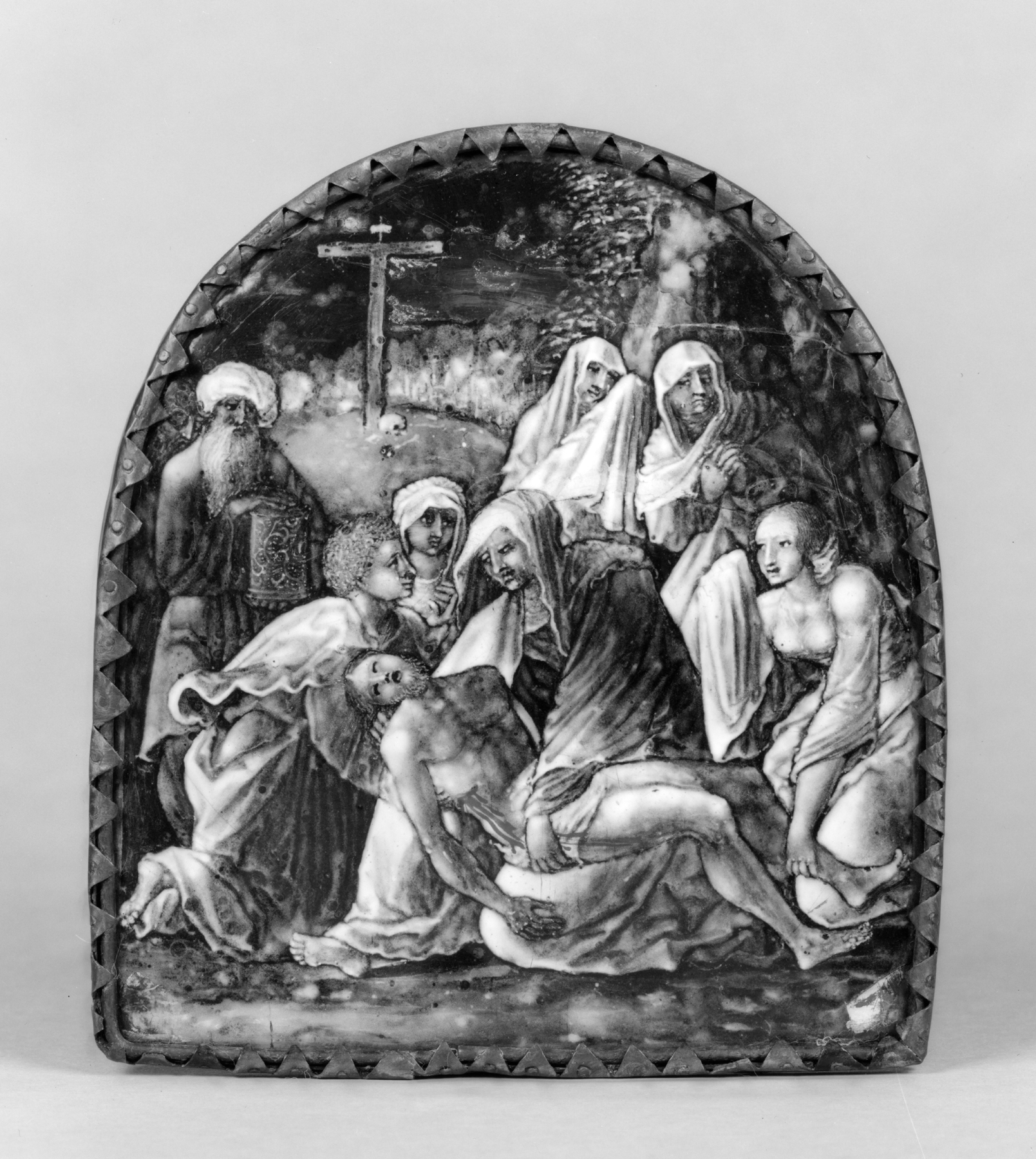Pietà
(Renaissance Europe )
The body of Christ, his head illuminated by a halo of light, rests on the lap of the seated Virgin. St. John supports it under the right shoulder with his right hand. The left foot is held my Mary Magdalene, who is about to wipe her tears with a cloth. Behind are other holy women and the cave. At the left, Nicodemus holds the vase of myrrh and aloes. In the background the tau-shaped cross rises on Golgotha, a skull and bone at its foot. In the distance under a cloudy sky are the pinnacles of Jerusalem.
The Pietà shows by its composition and also by its facial characteristics that a model by Jean Pénicaud I was used. Similar Pietàs from the Pénicaud workshop were made to be inserted into paxes. Paxes went in pairs, since they were presented to the congregation to be kissed, simultaneously on the Gospel side of the church and on the side of the Epistle.
Provenance
Provenance (from the French provenir, 'to come from/forth') is the chronology of the ownership, custody, or location of a historical object. Learn more about provenance at the Walters.
Jacques Seligmann, Paris, [date of acquisition unknown] by purchase; Henry Walters, Baltimore, 1910, by purchase; Walters Art Museum, 1931, by bequest.
Geographies
France, Limoges (Place of Origin)
Measurements
H: 5 3/8 x W: 4 5/8 in. (13.7 x 11.8 cm)
Credit Line
Acquired by Henry Walters, 1910
Location in Museum
Not on view
Accession Number
In libraries, galleries, museums, and archives, an accession number is a unique identifier assigned to each object in the collection.
In libraries, galleries, museums, and archives, an accession number is a unique identifier assigned to each object in the collection.
44.49


